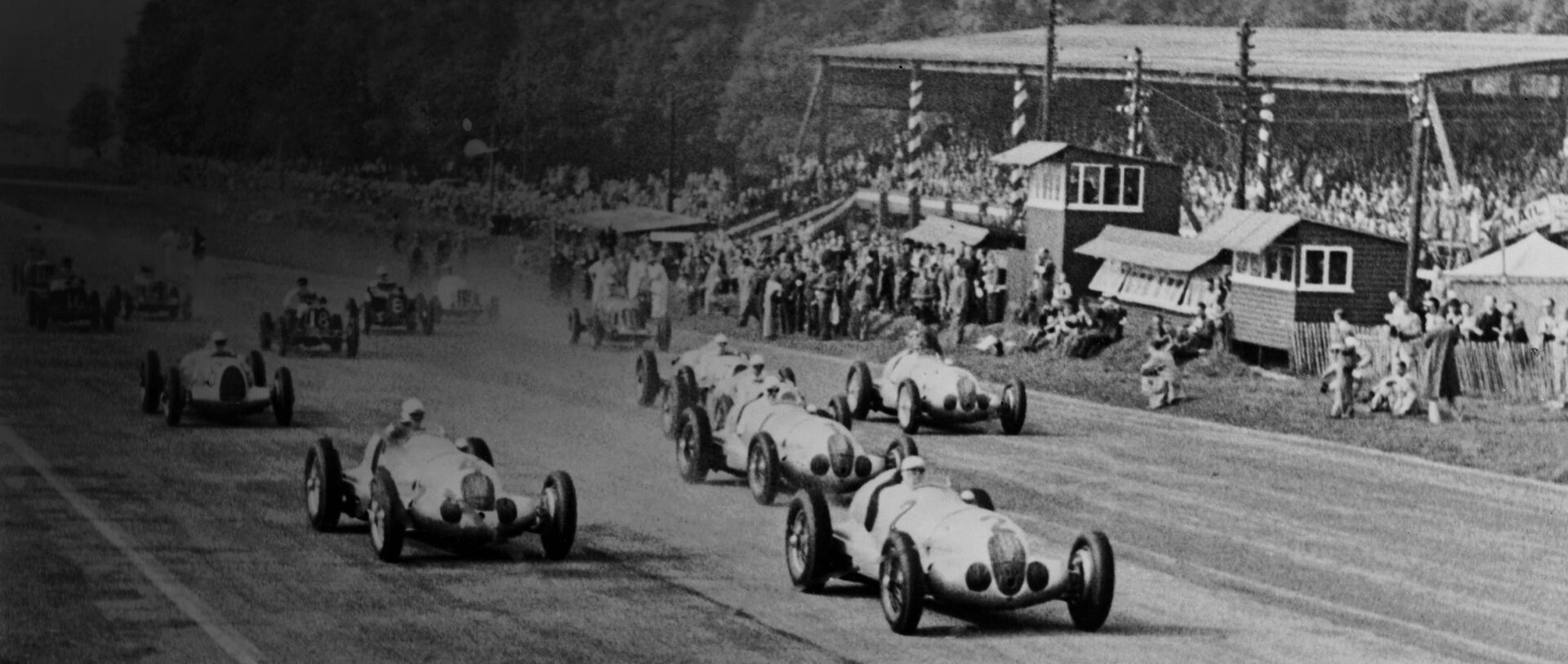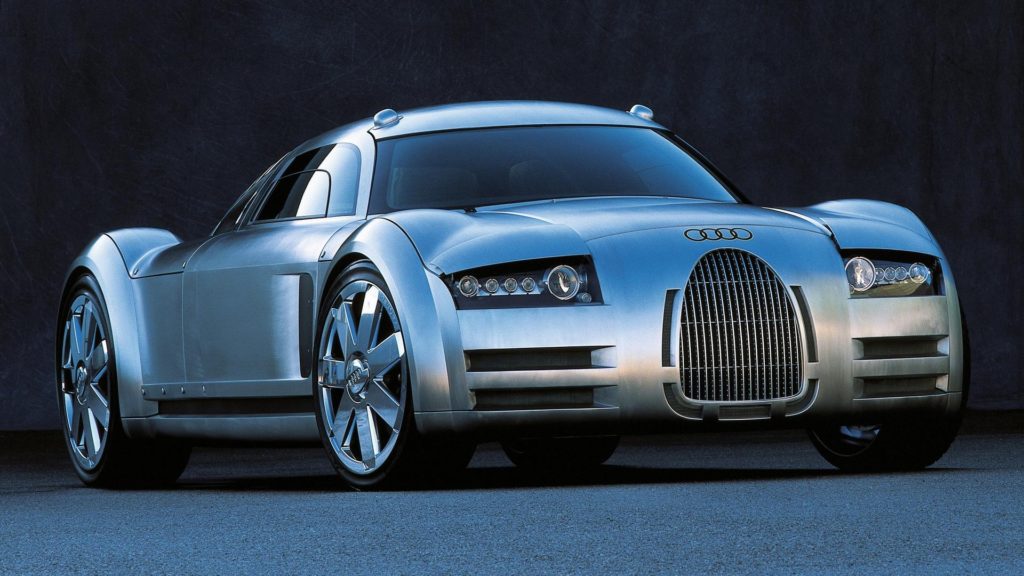Maybe it’s hubris, or just human nature, but most auto manufacturers have their founders name plastered proudly across their vehicles for the world to see. The backstory for the majority of these brand names are taken for granted, they seem so obvious: person wants to build a car, builds car, turmoil-hardship-success, slaps name on the car, end of story. Names like Ferdinand Porsche, Henry Ford, Walter Chrysler, Louis Renault, Preston Tucker and many more fit this equation. And why not… if you made a car, wouldn’t you want someone proudly say “I drive a Smith! … I drive a Johnson!” – I would too. But there are two names in automotive history, that I feel get overlooked the most.
Continuing with our “What’s in a Name?” series – we wanted to spend some time covering two companies whose stories briefly overlap and are forever linked together in epic Motorsports history. Those brands being: Mercedes and Audi.
Origin Story: Mercedes

The “Mercedes-Benz” we all currently recognize can most easily trace it’s roots to Daimler-Motoren-Gesellschaft (DMG) and Karl Benz‘s 1886 Benz Patent-Motorwagen. But that’s not the whole story. Daimler and Benz were actually two separate coach-works that collaborated by didn’t officially merge until 1926, finally becoming Diamler-Benz. Diamler was founded by Gottlieb Daimler and Wilhelm Maybach in 1890, and Benz was founded by Karl Benz in 1880.
Fast forward to 1900 and Diamler-Benz hires Emil Jellinek as one its leaders and is credited with ordering a small number of motor racing cars built to his specifications to kick off the Diamler-Benz racing program. And like any good racing director, he had his terms and stipulated that they must be called “Mercedes” – but Why?

The Mercedes name was derived from the daughter of Emil Jellinek (above) Adrienne Ramona Manuela Jellinek, who’s nickname was “Mercédès” #thanksmom. The name “Mercedes” was to be used as a honorary name for the most important series of DMG automobiles: “the Mercedes series”, which were designed and built by Wilhelm Maybach and thanks to Jellinek is now a name synonymous with Motorsports history.
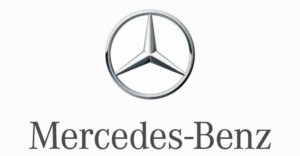
As companies grow and evolve over time, they acquire, split, re-brand, reorganize, etc. And Daimler has had its fair share of mergers and acquisitions over its 100+ years of operation. In the early years Daimler had country specific subsidiaries like: Austro-Daimler until finally merging them into one company for logistical reasons. Today Daimler AG also owns and operates the following brands: Mercedes-Benz, Mercedes-AMG, Smart Automobile, Detroit Diesel, Freightliner, Western Star, Thomas Built Buses, Setra, Bharat-Benz, Mitsubishi Fuso, MV Agusta and others! Additionally, Mercedes-AMG was founded as a racing engine division of Daimler in 1967 under the name AMG Motorenbau und Entwicklungsgesellschaft mbH (AMG Engine Production and Development, Ltd.) ultimately shortened to just “AMG.”
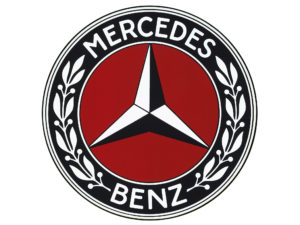
Thanks to Jellinek, Daimler carried the unique Mercedes name from very early on. When you continue to dig into the backstory of the company is a bit of a jigsaw puzzle involving famous names like Porsche, Stuck, Mayback and many others. But even more mysterious is the decision behind the “Tri-Star” logo. According to my findings, the three-pronged star surrounded by a laurel represents Daimler’s drive toward universal motorization with its engines dominating the land, sea, and air (i.e: three points) – looking back, it definitely paints a “world domination” vibe. #carofthepeople #worldcar #globalization
Today, Mercedes continues to be known for world class luxury as well as cutting-edge and refined engineering, a trend that has thrived at Diamler since the early days.

Even though we don’t see as many Mercedes entries in Motorsports any more, that doesn’t mean AMG-powered cars aren’t out there winning! #formula1
Origin Story: Audi
Audi’s origin like Daimler is quite complicated. In 1899, August Horch founded August Horch & Cie. Motorwagenwerke AG which moved several times before settling in Zwickau, Germany in 1915. Because of some complicated financial politics between Horch and his business partners he was sued and forced to resign from the company and banned from using the name “Horch” on any future vehicles. #lawyers. In 1910, Horch was scrambling for names for his new company and with some friendly family assistance settled on “Audi” by way of a rather convoluted translation. “Horch” in German means “Hark!” or “Hear”, which converts to “Audi” in the singular imperative form of “audire” – “to listen” – in Latin. #thirdperiodlatinclass
But that isn’t the entire back story for Audi. Like Daimler, there is even more hidden history buried in the company insignia. How was Audi eventually tied to the famed “Auto Union” and it’s 4-rings insignia? – In 1932, Audi (owned and operated by August Horch) and 3 other manufacturers DKW, Wanderer and Horch (the car company) co-founded a foundation called “the Auto Union.” The 4-rings originally held miniature versions of each parent companies logo inside the rings and the overlap symbolized the collaboration between the partners (below).
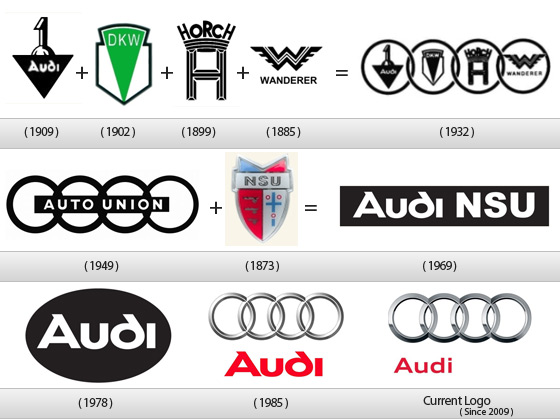
Post-WW2, the Auto Union and NSU would be absorbed by Volkswagen. Production within DKW, Wanderer and NSU had basically withered to nothing, but Audi continued to thrive on its own. The Audi brand was kept as a wholly owned subsidiary of VW, with co-branded projects and engineering labeled “VW-Audi” (as well as “VW-Porsche” and “Porsche-Audi”) to signify the joint ventures.
The modern Audi AG cars we’ve come to appreciate really began to take shape in the 1960s, but it wasn’t until 1985, that Audi was officially absorbed into the new Volkswagen-Audi Group (VAG). Leadership and Stock ownership between VW, Porsche and Audi has changed relatives, families, and hands so many times it’s rather amusing. Today, VAG is partially owned by the German-state and controlled by the Porsche-Piech family.

But wait… there’s more! – much like Daimler with it’s sub-companies (AMG, etc) “Quattro” is actually a licensed term for the beloved all-wheel-drive system equipped on most Audi’s, but it’s actually a privately owned subsidiary of Audi spun off to handle all of their specific Motorsports research and development efforts known as Quattro GmbH (renamed to Audi Sport GmbH in 2016). Additionally, VAG absorbed Cosworth Engineering (famed Lotus partners) in 1998 and also combined that with Audi Sport. Not to mention other VAG acquisitions like: Ducati, Lamborghini, Bugatti, Seat, Skoda, Bentley and even Scania and MAN trucks!
Audi is no longer considered just an offshoot of the VW brand, but rather the height of engineering excellence in the company. Pride in their research, development and engineering has allowed Audi to pull forward in the luxury/sports car markets and compete with Mercedes and BMW. #vorspringdurchtechnik #progressthroughtechnology
So… What is a Silver Arrows?
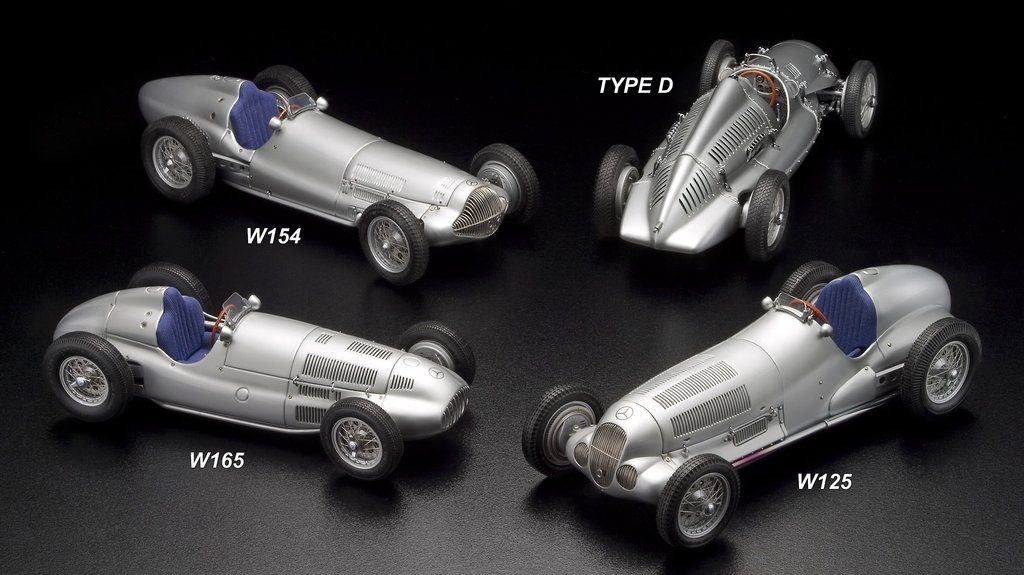
First and foremost, the term “silver arrows” really refers to a “body style” of vehicle produced from 1932-39 by Mercedes and Auto Union. However, there is controversy, legends, myths and doubts around the actual origin of the name “silver arrows”. The very first reference to this style of vehicle was seen as a streamlined all-aluminum bodied entry from Daimler as called the “Mercedes SSKL” for the Avusrennen (AVUS) race in 1932.
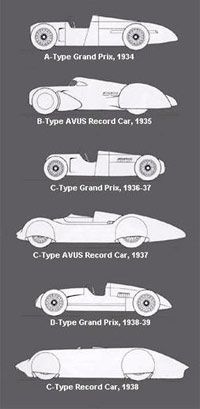
After further development, both Daimler and Auto Union entered similar shaped/bodied cars borrowing from techniques used to build stressed-skin aircraft fuselages (a style that Colin Champan would also come to emulate). Both manufacturers felt they would be more streamlined and lighter if the body panels remained unpainted and polished.
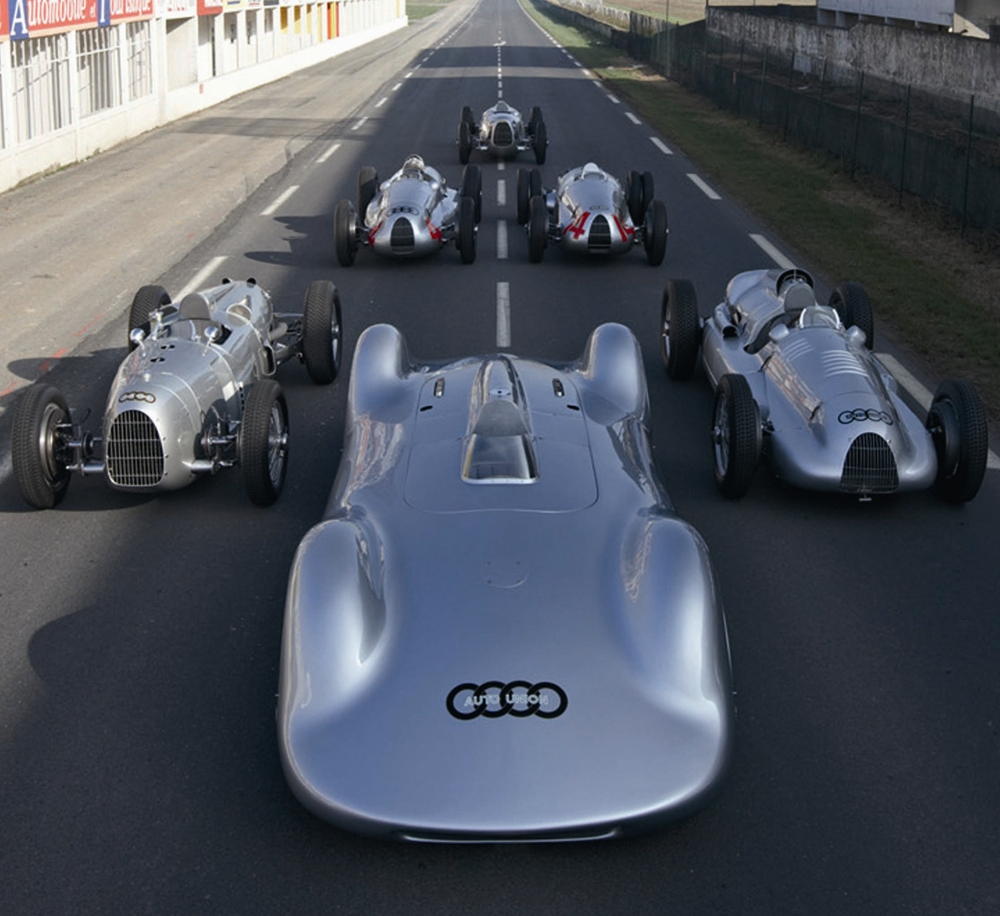
The battle for supremacy pushed these cars to produce 500…600… and nearly 700 hp! with top speeds reaching 186 mph during the next few years of racing. Considering this was the mid-1930’s, the capability of these cars was impressive to say the least. Live radio commentators during the 1934 AVUS race began to refer to these incredibly fast cars as “silver arrows.” – and so the legend was born.
Skip to the mid-late ’90s through the better part of the 2000s, and we saw “the return of the arrows” with LeMans winning entries from both Mercedes (CLK-LM GTR) and Audi (Audi R8 LMP), setting all new records in prototype racing. Audi even went so far as to build a special Rosemeyer Concept car based on the R8 in honor of the Silver Arrows (below).
Although often complicated, diving into the histories of these manufactures makes for some interesting and inspiring reading and we hope that we’ve been able to clear up or maybe add to your Motorsports knowledge-base!
Additionally, I have to give credit for the inspiration for this article to John Warner IV, whom I met on the CCCA Spring Tour earlier this year. I am currently reading his book titled “Little Anton” (to be reviewed in a future article) which covers these early days of Motorsports in Europe. Many thanks John!
#neverstoplearning


